The BROLETTO
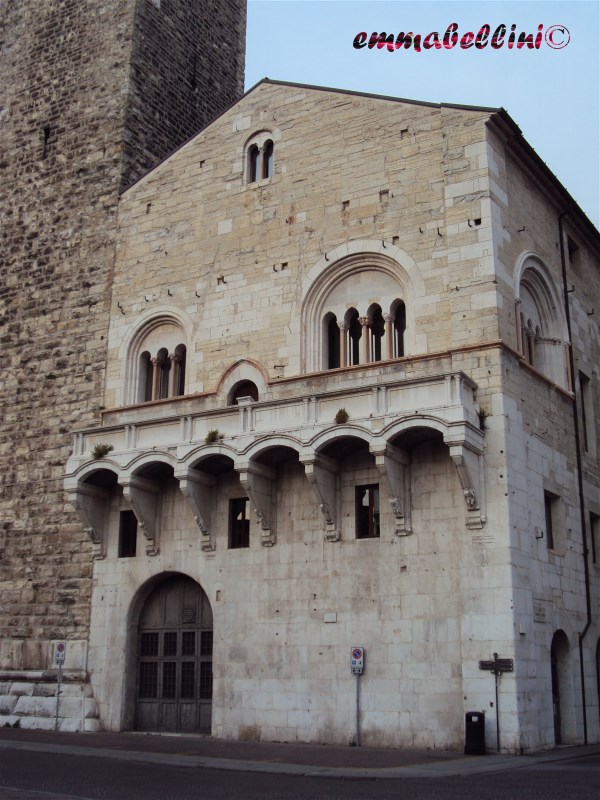
The “Broletto” houses the city council administrative offices, next to it stands the Duomo Vecchio, or old cathedral, and the Duomo Nuovo, the new cathedral. It is one of the most interesting medieval Lombard structures in the area.
See the photo
See the photo
The CAPITOLIUM
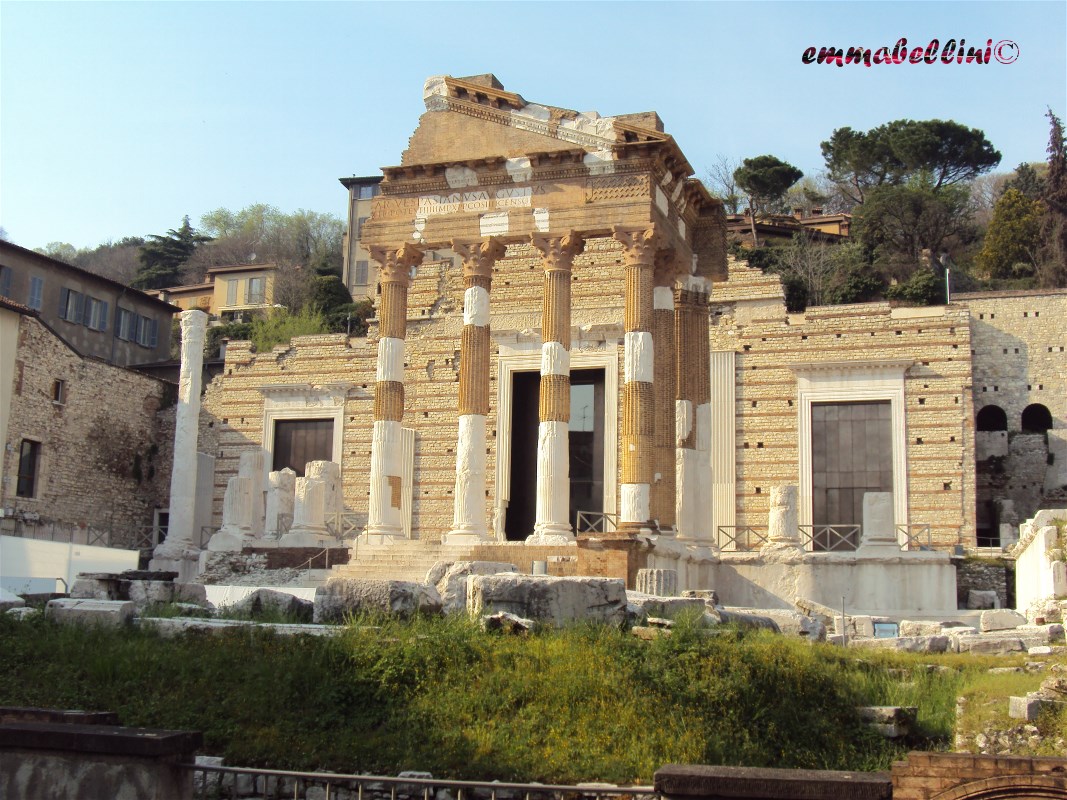
The “Capitolium” was built by Emperor Vespasian in 73 A.D. Tablets, altars and architectural fragments are on display in the Lapidarium on the ground floor. The central cella holds reproductions of some of the most important wall paintings in public and private buildings throughout the province.
See the photo
See the photo
The CASTLE

The “Castle” in Brescia is surrounded by gardens and fortified with towers, ramparts, outhouses, courtyards, drawbridges and underground tunnels. The tunnels were built between the 13th and the 16th century and can be walked through. Around the central keep, the Venetians built bastions and storerooms for provisions. The monumental entrance topped by the Lion of St. Mark was created between the 15th and the 16th century. The Castle is home to the Museum of Ancient weapons, the Risorgimento Museum, the Cidnean Observatory and two large model railways.
See the photo
See the photo
The CHURCH of SAN FAUSTINO in RIPOSO
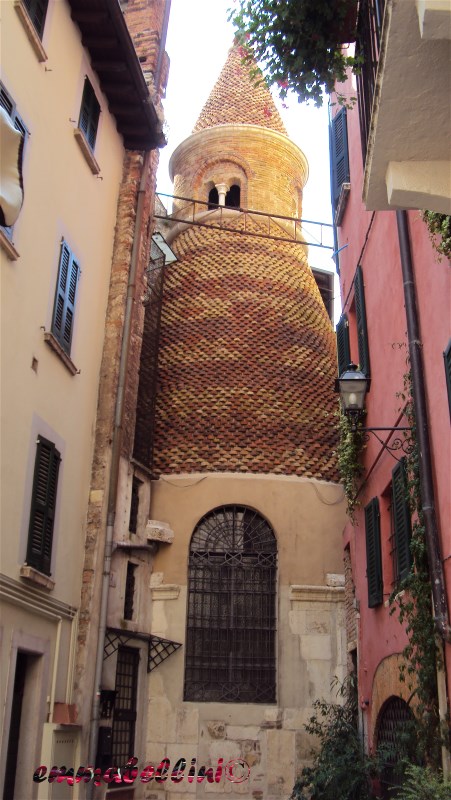
The “Church of San Faustino in Riposo” is a small circular church with a curious conical brick cupola built at the end of 12th century. It is situated at the end of Via dei Musei.
See the photo
See the photo
The CHURCH of SAN GIOVANNI EVANGELISTA
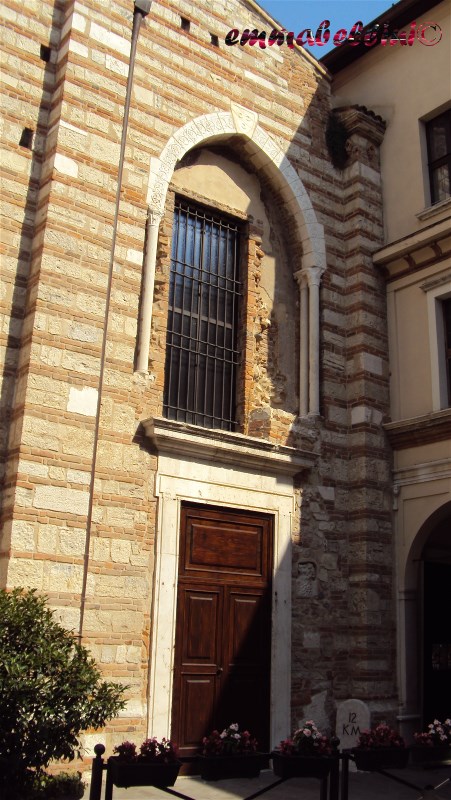
The “Church of San Giovanni Evangelista” dates back to early Christian times and was rebuilt in the 15th century. The chapel of the Holy Sacrament is decorated with masterpieces by Moretto and Romanino.
See the photo
See the photo
The CHURCH of SAN GIUSEPPE
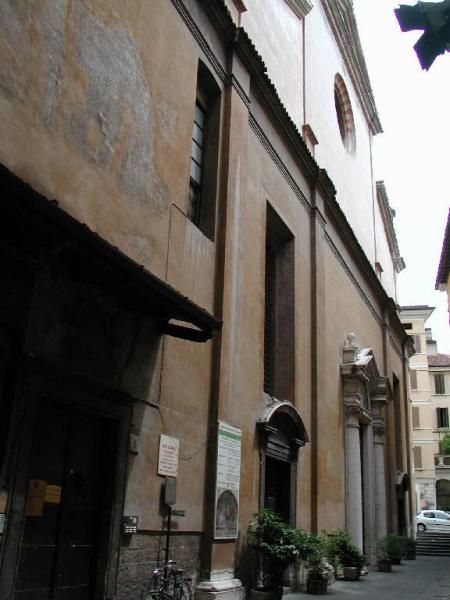
The “Church of San Giuseppe” is part of a large complex of 16th century conventual buildings. The façade features three portals and these are three splendid cloisters decorated with 16th – 18th century frescoes.
See the photo
See the photo
The CHURCH of SANTA MARIA del CARMINE
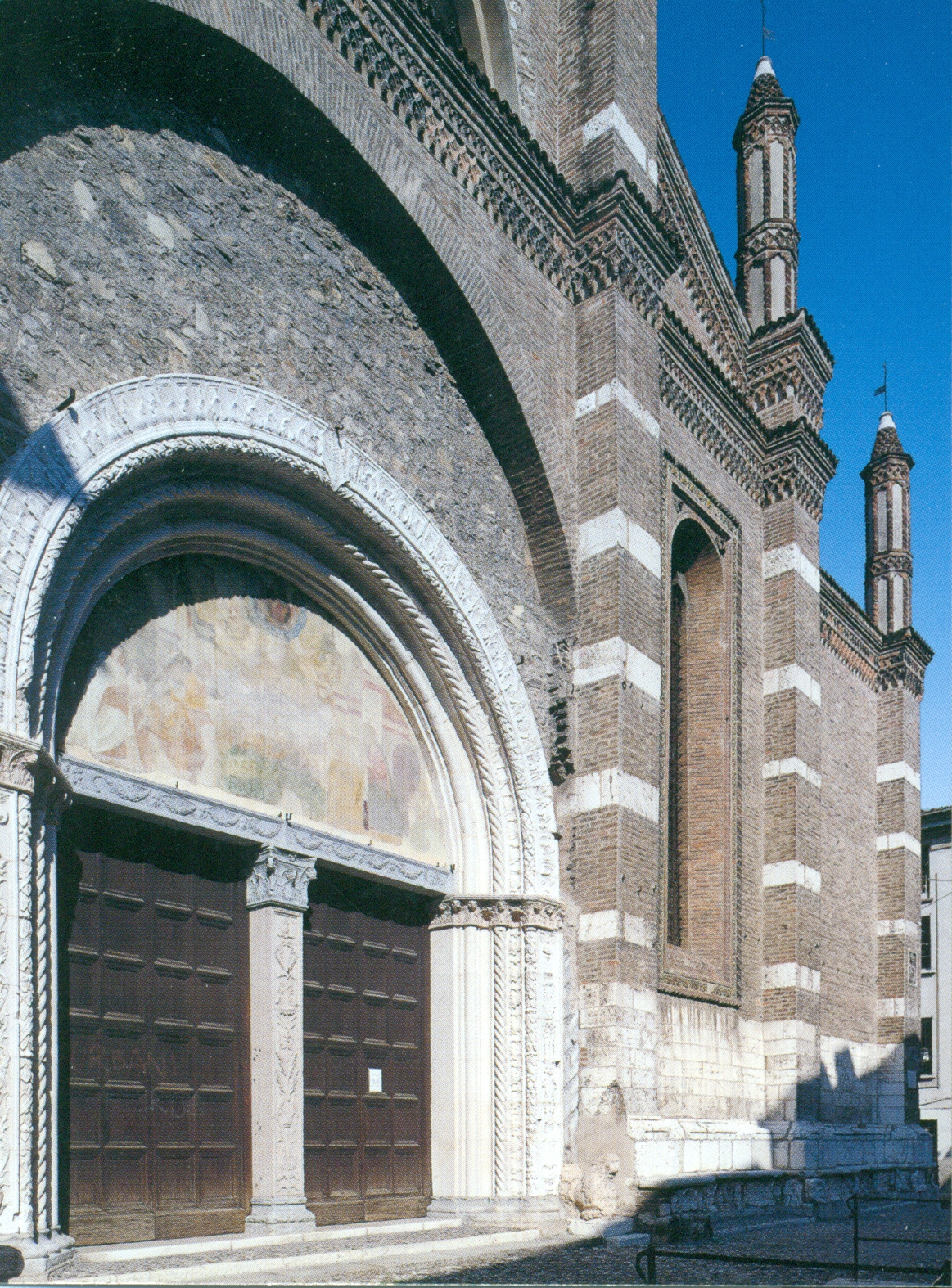
The “Church of Santa Maria del Carmine” was built in the 15th century and novated a century later. It has an unusual decorated brick façade.
See the photo
See the photo
The CHURCH of SANTA MARIA delle GRAZIE
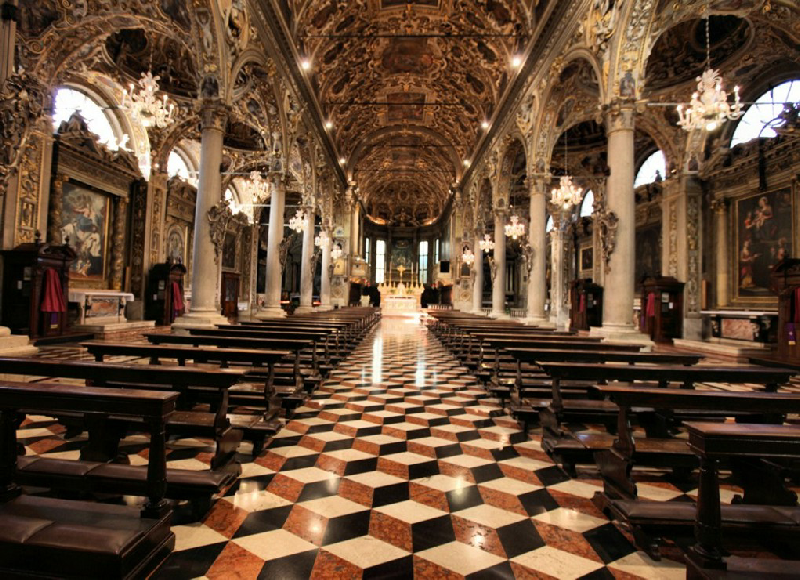
The “Church of Santa Maria delle Grazie” has a splendid Renaissance doorway that protects the wooden doors, and the interior is decorated with frescoes and baroque stuccoes.
See the photo
See the photo
The CHURCH of SANTA MARIA dei MIRACOLI
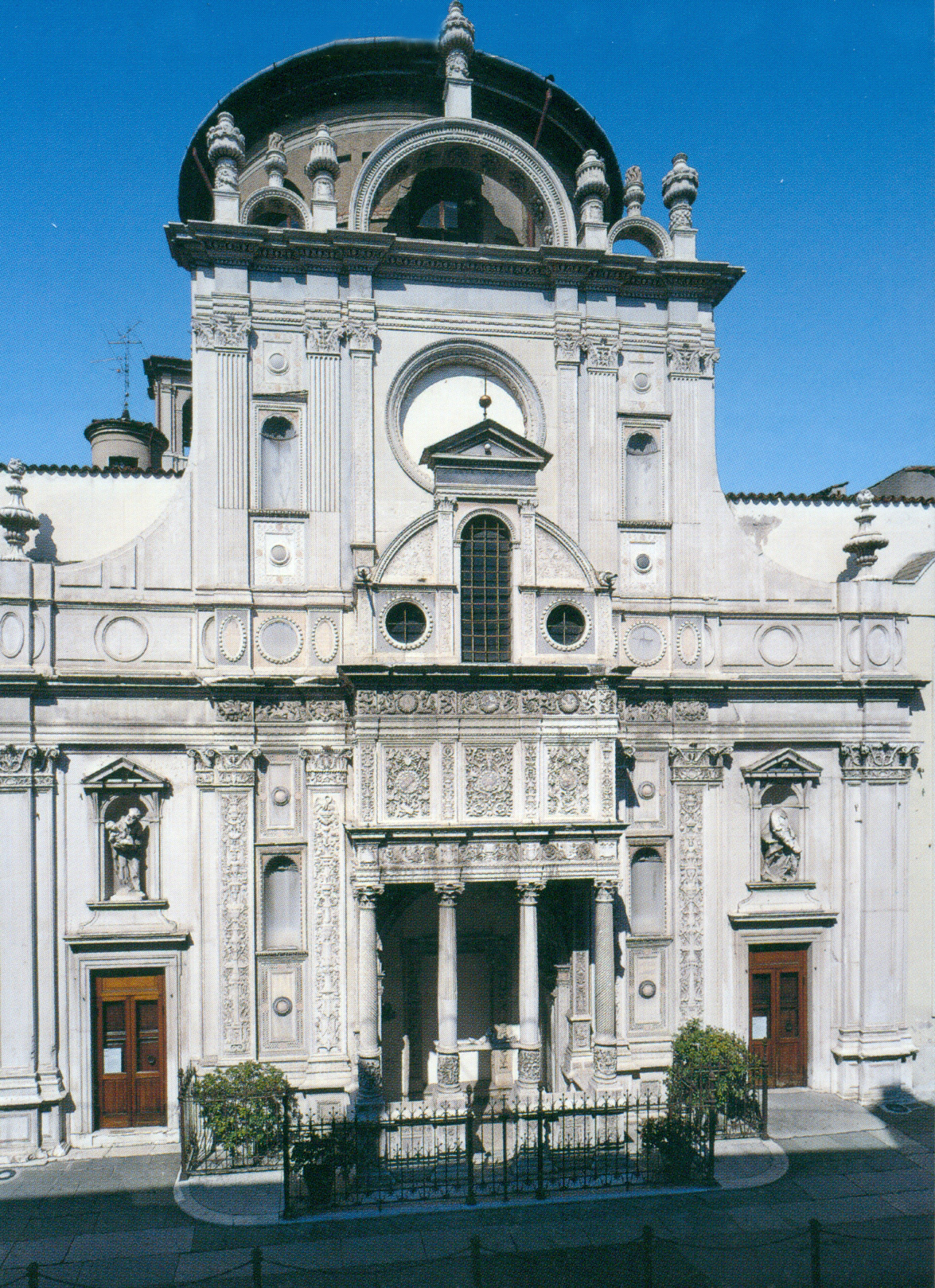
The “Church of Santa Maria dei Miracoli” has an elegant marble façade decorated by the same masters, who worked on the Loggia. The painting of the Madonna on display inside the church is considered to have miraculous powers.
See the photo
See the photo
The CLOCK TOWER
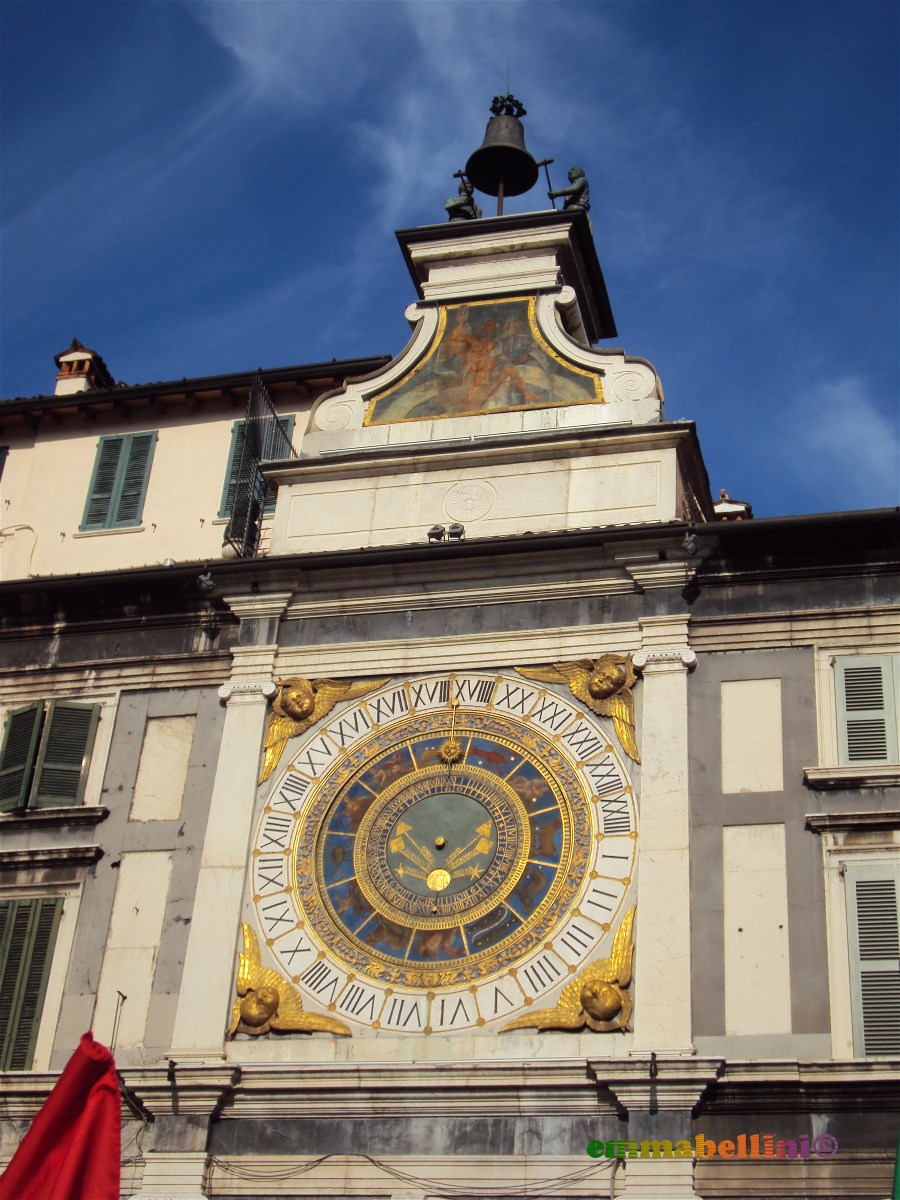
The “Clock Tower” faces the Loggia, in the centre of the colonnade built in 1595. The mechanical astronomical clock is very beautiful and features the signs of the Zodiac.
See the photo
See the photo
The DUOMO NUOVO
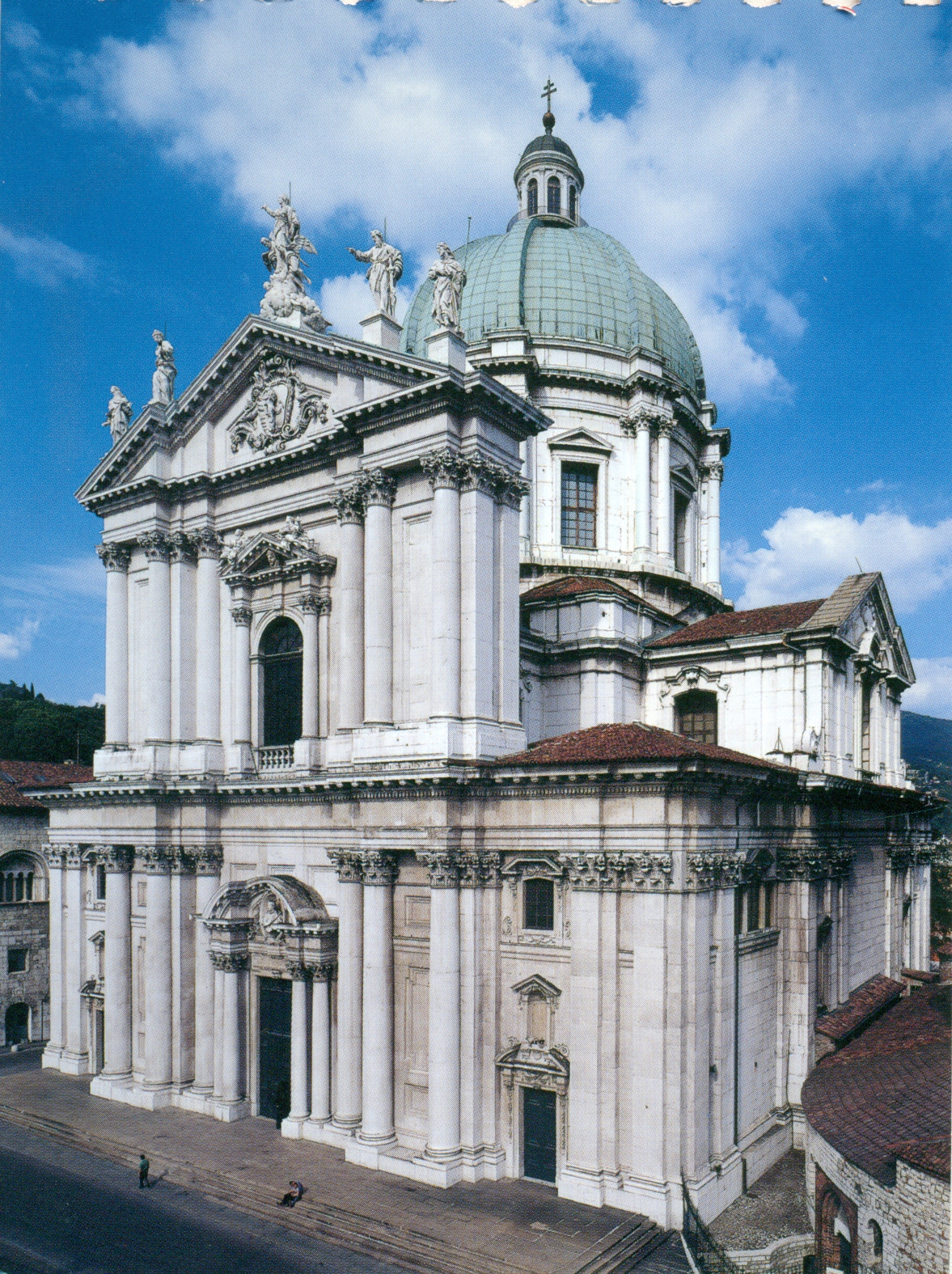
The “Duomo Nuovo” dominates Piazza Paolo VI with its imposing white marble façade. It took over two centuries to complete (1604 to 1825) and the dome is the third highest in Italy.
See the photo
See the photo
The DUOMO VECCHIO
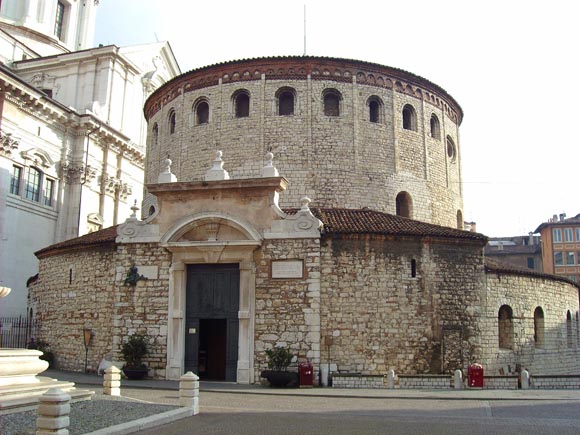
The “Duomo Vecchio (Old Cathedral)”, also known as the Rotonda and is one of the few round Romanesque churches in Italy. Its unusual shape was probably based on that of the Holy Sepulchre in Jerusalem. It has an attractive interior with a large circular central area sorrounded by a pillared walkway.
See the photo
See the photo
The MONASTERY of S. GIULIA
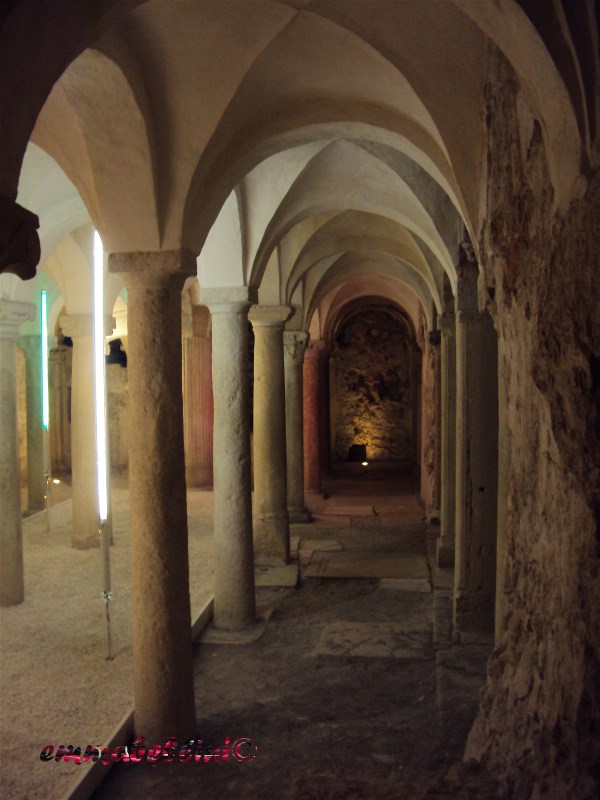
The “Monastery of Santa Giulia” was founded by the Lombard king, Desiderius, and was continually renovated and expanded up until the Renaissance. The building complex mirrors Brescia’s history and houses the monastery. The city museum allows visitors to trace the history of the people living in the Brescia area from the first settlements in the Bronze Age to the Renaissance.
See the photo
See the photo
The PALLATA TOWER
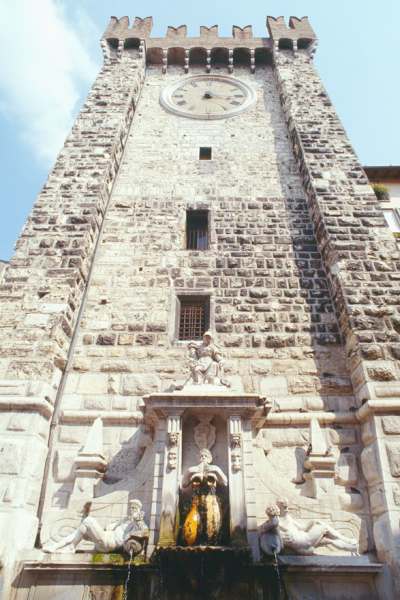
The “Pallata Tower” dates back to the 13th century. The Bagnadore fountain was built at the base in 1596. The fountain commemorates Brescia’s two rivers, the Garza and the Mella.
See the photo
See the photo
The PIAZZA DUOMO, now PIAZZA PAOLO VI
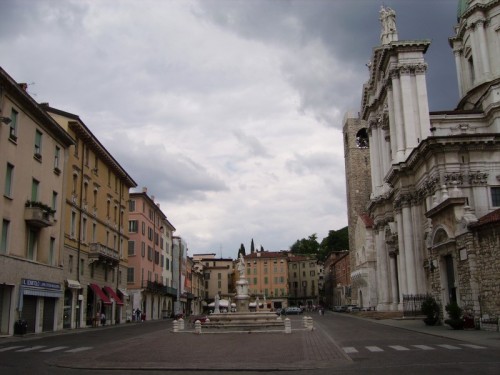
The “Piazza del Duomo” is one the main square dedicated to Pope Paul VI.
See the photo
See the photo
The PIAZZA LOGGIA
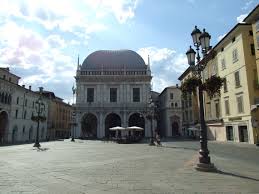
The “Piazza Loggia” is one of the most beautiful Venetian style squares outside of Venice and the Brescians are very proud of it. The construction was initiated in 1433 by Marco Foscari, the town’s Venetian mayor. Built around the square are the Loggia, the Monte Vecchio and Monte Nuovo di Pietà and porticoes surmounted by the clock tower. Work on the Loggia began in 1492 and finished around 1570. It remains a symbol of the city and contains the main offices of the City Council. Its sculptural decoration in Botticino marble is very impressive.
See the photo
See the photo
The PIAZZA della VITTORIA
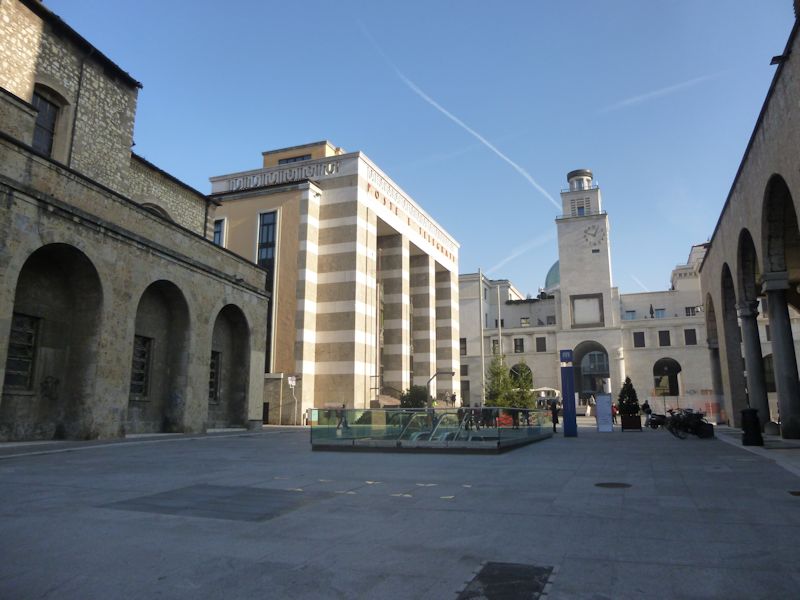
The “Piazza della Vittoria” was built by knocking down a large part of the medieval city. The square was designed by the Fascist architect Marcello Piacentini in his monumental and neo – classical style. The inauguration ceremony took place in 1932.
See the photo
See the photo
The QUERINIAN LIBRARY
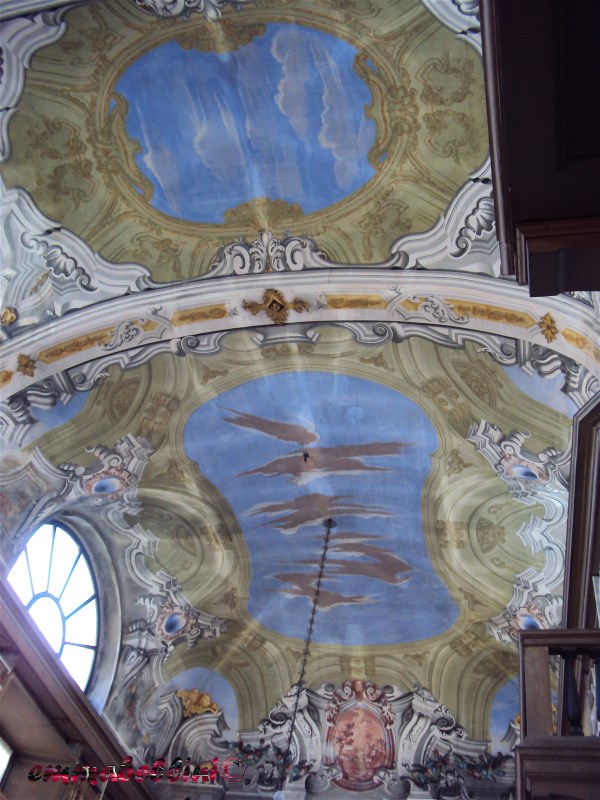
The “Querinian Library” is housed in a severe – looking building designed in the mid-18th century by Antonio Marchetti.
See the photo
See the photo
The ROMAN THEATRE
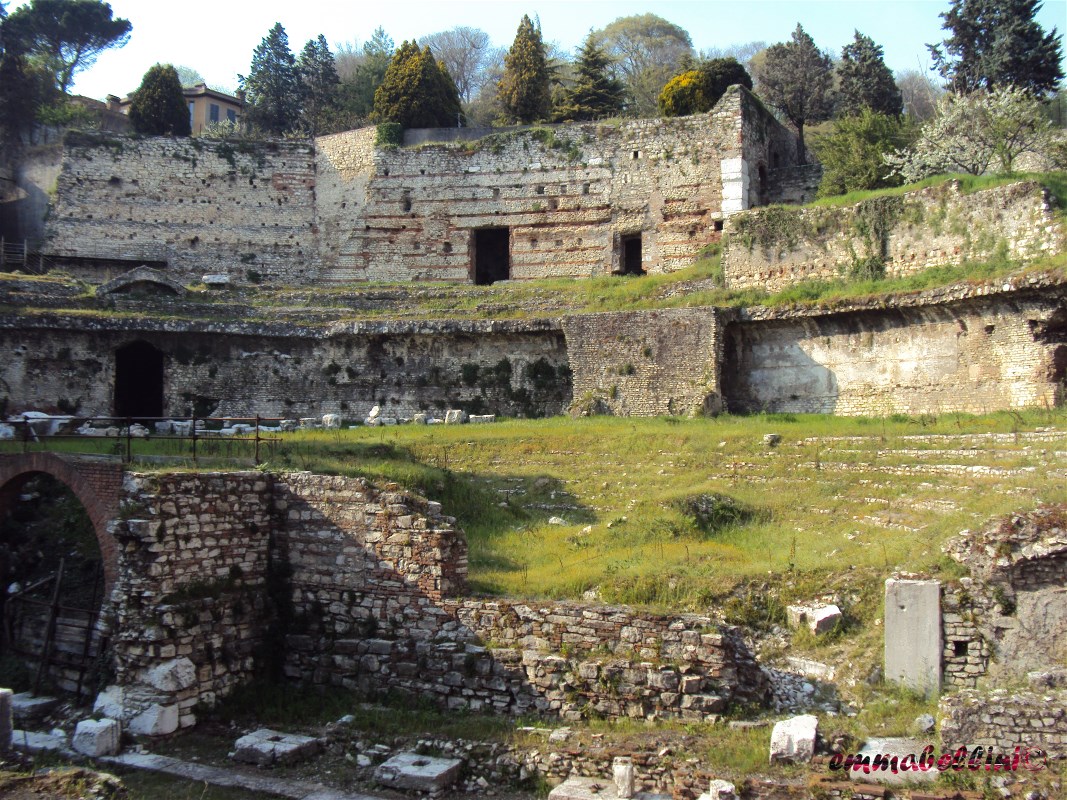
The “Roman Theatre” was built in the 3rd century A.D. Although it was damaged in an earthquake in the 5th century, it continued to be used for public meetings, even in the Middle Ages. It can hold fifteen thousand people.
See the photo
See the photo
The TEATRO GRANDE
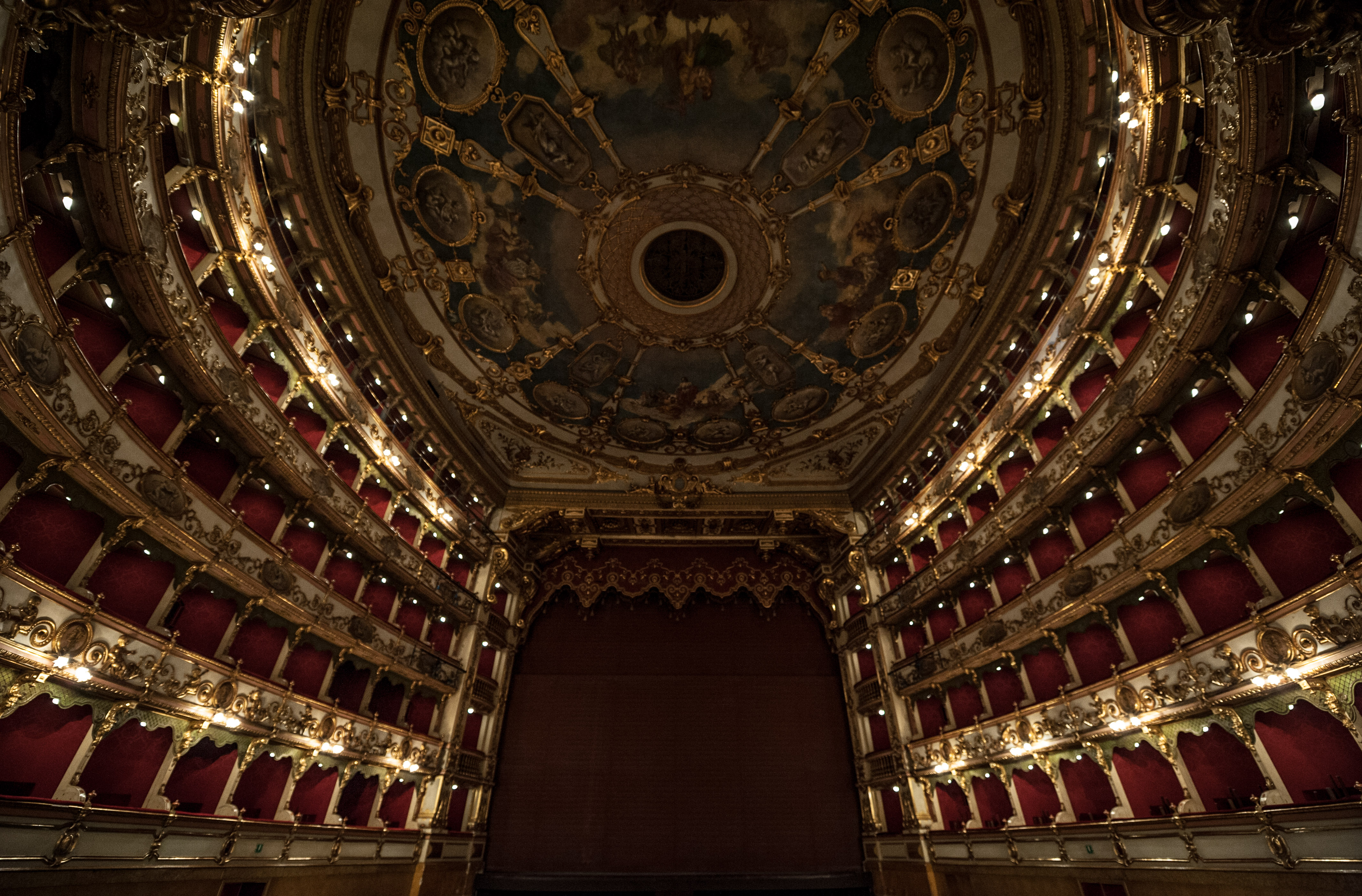
The “Teatro Grande” has always been the city’s centre of musical culture. The entrance to the theatre is in Corso Zanardelli, the high street of Brescia.
See the photo
See the photo
The TITIAN’S POLYPTYCH
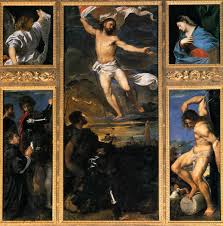
The “Titian’s Polyptych” can be found in the Church of Saints Nazaro e Celso. Dubbed the Averoldi Polyptych, it is one of his early master pieces, dating back to 1522. It consists of 5 panels depicting the life of Christ: Christ resurrected in the centre, flanked by the Angel and the Virgin, and below, Saints Nazarins e Celsus with donor, and St. Sebastian.
See the photo
See the photo
English text by Anna Ramponi
>>>Return page Brescia and his treasures



